1. Comprehensive Introduction to Metal Cable Management
1.1 What Is Metal Cable Management?
Metal Cable Management refers to the systems, solutions, and components designed for the routing, securing, and organization of cables in industrial, commercial, and residential applications. These systems ensure that cables—from electrical wiring to signal and communication cords—are stored, routed, and protected from environmental hazards, mechanical stress, and wear over time. Metal Cable Management is widely used in telecommunications, data centers, manufacturing facilities, offices, and anywhere cables need to be properly managed to ensure safety and operational efficiency.
Metal Cable Management systems are built primarily of metal materials such as mild steel, stainless steel, or aluminum. Each material provides certain advantages:
Mild Steel:
Known for strength and cost-effectiveness, though prone to corrosion if not properly coated.
Stainless Steel:
Offers excellent corrosion resistance and durability, ideal for harsh environments.
Aluminum:
Lightweight and resistant to corrosion, making it suitable for applications where weight is a factor.
1.2 Types and Varieties of Metal Cable Management Systems
There are a variety of systems used to control, guide, or house cables. Understanding the available types helps operators and engineers select the optimal solution for specific applications. Some common types include:
1.2.1 Cable Trays
Cable trays provide support and routing paths for electrical wiring and data cables. They are commonly used in settings with high cable density.
Perforated Cable Trays:
Feature numerous small holes that allow for ventilation and easy cable access.
Solid-Bottom Cable Trays:
Offer protection from dust and debris, ideal for outdoor or industrial applications.
Ladder-Type Cable Trays:
Resemble ladders and provide excellent cable ventilation and ease of installation.
Channel Cable Trays:
Enclosed trays that secure cables from external damage and can be installed in tight spaces.
1.2.2 Cable Ducts and Conduits
Cable ducts (often referred to as cable conduits) are enclosed channels that not only support but also protect cables from environmental hazards.
Flexible Conduits:
Made for dynamic environments where cables may need to bend or move.
Rigid Metal Conduits:
Provide robust mechanical protection in fixed installations and are frequently used in commercial and industrial settings.
1.2.3 Cable Ladder Systems
Cable ladders combine the rugged structure of ladder systems with cable management benefits. They support large bundles of cables and are designed for installations that require excellent ventilation and minimal cable damage.
1.2.4 Cable Trunking
Cable trunking systems are designed to house cables along walls or under floors. These systems are often used in office environments or data centers due to their sleek appearance and easy access to cables.
1.2.5 Cable Troughs and Raceways
Cable troughs and raceways are enclosed pathways that provide aesthetic cable concealment as well as physical protection. They are ideal for environments demanding both safety and a clean, professional look.
1.2.6 Wire Management Bars and Clamps
Wire management accessories—such as cable ties, clamps, and brackets—are essential elements that help secure individual cables within larger systems. These accessories improve routing, reduce cable stress, and facilitate easier maintenance.
1.3 Key Parameters and Considerations
When specifying or selecting a Metal Cable Management solution, several parameters must be considered to ensure that the final installation meets the technical, safety, and regulatory requirements.
1.3.1 Material Properties
The choice of metal directly affects durability, resistance to corrosion, and load-bearing capacity:
Tensile Strength: Determines the load the system can bear.
Corrosion Resistance:
Especially critical in outdoor or chemically aggressive environments.
Thermal Conductivity:
Impacts heat dissipation from cables carrying high currents.
Surface Finish:
Affects both durability and aesthetic appeal. Options may include powder coating, galvanization, or anodizing.
1.3.2 Load Capacity
Cable management systems are engineered to support varying weights of cables. Load capacity depends on cable type, density, and span length. Some systems are designed with heavy-duty applications in mind, accommodating very high cable weights often found in industrial settings.
1.3.3 Dimensional Tolerances and Customization
Many projects require custom solutions to meet unique installation challenges. Manufacturers offer customization in dimensions, curvatures, and load configurations. Key dimensions include:
Tray Width and Depth:
Determines the number and size of cables that can be accommodated.
Cable Clearance:
Ensures sufficient spacing to avoid overheating.
Bend Radius:
Critical for preventing damage to cables during installation.
1.3.4 Environmental and Safety Standards
Compliance with various international safety and performance standards is paramount:
UL (Underwriters Laboratories) Certification:
Ensures products meet North American safety standards.
CE Marking:
Indicates compliance with European health, safety, and environmental protection standards.
RoHS (Restriction of Hazardous Substances):
Ensures minimal environmental impact and safe working conditions.
1.3.5 Design and Aesthetic Considerations
In environments such as offices or data centers, the appearance of cable management systems matters. Modern designs emphasize sleek, low-profile, and unobtrusive installations. This is particularly important for visible installations, where the system's design can affect overall interior design aesthetics.
1.4 Metal Cable Management Manufacturing Processes
High-quality metal cable management products result from advanced manufacturing processes and robust quality control systems. Key production techniques include:
1.4.1 Laser Cutting and Precision Fabrication
Laser cutting is employed for its high precision, speed, and clean-cutting results. It ensures edges are smooth and components are manufactured within tight tolerances. This process is critical when dealing with intricate designs such as perforated trays or custom cable ducts.
1.4.2 Press Braking and Bending
The press braking process allows metal sheets to be bent into required angles and shapes without compromising structural integrity. Automated bending processes ensure consistency and adherence to design specifications.
1.4.3 Welding Techniques
Welding joins different components—such as corner brackets or tray segments—into a unified system. Advanced automated welding techniques (e.g., robotic welding) enhance consistency, reduce impurities, and provide excellent strength at the joints.
1.4.4 Assembly Line Integration
Modern Metal Cable Management systems are often assembled on continuous production lines. This integration of laser cutting, bending, welding, and assembly ensures streamlined operations and rapid production cycles, reducing lead times for large orders.
1.4.5 Surface Treatments and Coatings
Post-assembly, products are subjected to surface treatment processes such as powder coating or galvanization. These finishing touches protect against corrosion, improve durability, and enhance the visual aesthetics of the final product.
1.5 Common Applications and Use Cases
Metal Cable Management systems find uses in various fields. Below are some common applications:
1.5.1 Industrial Facilities
In factories and manufacturing plants, metal cable management systems safeguard power and data cables from mechanical damage, chemical spills, and excessive heat. They help reduce downtime by simplifying maintenance and reconfiguration of cable networks.
1.5.2 Data Centers and IT Infrastructure
Cable management is critical in data centers where hundreds or thousands of cables connect servers, routers, and other hardware. Efficient cable management reduces the risk of overheating and minimizes signal interference while enhancing overall aesthetic appeal.
1.5.3 Telecommunications Networks
Telecom installations, including central office setups and remote terminals, require robust cable management systems to organize complex arrays of cables. This ensures ease of access, maintenance, and scalability as network demands grow.
1.5.4 Commercial and Office Buildings
Modern office spaces, retail outlets, and commercial complexes often use elegant cable trunking and raceways for concealing cables while still offering accessibility. These systems contribute to a clutter-free and safe environment for employees and visitors.
1.5.5 Transportation and Infrastructure
In transportation hubs, such as airports, train stations, and control centers, durable cable management systems are essential. They support essential communication and power systems while ensuring that installations conform to strict safety standards.
1.5.6 Renewable Energy Installations
Wind farms, solar power plants, and other renewable energy setups rely on cable management systems to protect and manage high-power electrical cables in outdoor and often harsh environments. The design solutions must emphasize reliability and long-term performance.
1.6 Notable Features of Advanced Metal Cable Management Systems
Modern Metal Cable Management solutions are designed with numerous features to enhance their performance and flexibility:
1.6.1 Modular Design
Modular systems allow flexibility in configuring solutions based on changing installation needs. Modules can be added or reconfigured without replacing the entire system, making upgrades and maintenance simple.
1.6.2 Scalability and Expandability
As requirements evolve, cable management systems can be scaled up by adding additional trays, ducts, or branches. This expandability is crucial in environments where the number of cables grows over time or when new equipment is added.
1.6.3 Enhanced Safety Mechanisms
Incorporating features such as rounded edges, anti-slip surfaces, and secure fastening methods minimizes risks of cable damage or injury to personnel during maintenance. These safety features are critical in high-traffic areas.
1.6.4 Integration with Intelligent Systems
In advanced industrial setups, cable management systems may integrate with monitoring systems that assess cable temperatures, detect early signs of wear, or monitor environmental conditions. Such "smart" systems can alert maintenance teams before minor issues become major problems.
1.6.5 Durability and Low Maintenance
The robust construction—often featuring reinforced joints and corrosion-resistant finishes—ensures a long service life. Low-maintenance designs reduce downtime and the need for frequent inspections.
1.7 Performance Metrics and Testing
Manufacturers and end-users rely on comprehensive testing to validate the performance of Metal Cable Management systems. Key testing parameters include:
Load Testing:
Verifying that trays and supports can safely carry the specified weight of cables without sagging or deforming.
Vibration and Shock Testing:
Ensuring that the system maintains integrity in environments subject to mechanical shocks or continuous vibrations.
Environmental Resistance:
Subjecting products to accelerated corrosion tests, thermal cycling, and exposure to chemicals to confirm longevity.
Dimensional Accuracy:
Regular inspections during production ensure adherence to design specifications and tolerances required for secure cable routing.
1.8 Economic and Functional Benefits
Investing in high-quality Metal Cable Management systems yields both short-term and long-term benefits:
1.8.1 Reduced Maintenance Costs
Well-designed cable management systems improve organization, reducing the time required for repairs or replacements. In complex installations like data centers, streamlined cable routing can significantly lower maintenance costs.
1.8.2 Enhanced Safety and Compliance
By meeting industry standards and reducing cable clutter, these systems enhance the overall safety of the workspace. Compliance with UL, CE, and RoHS requirements also minimizes legal and operational risks.
1.8.3 Operational Efficiency
An organized cable layout improves airflow in data centers and reduces the time needed to locate issues during troubleshooting. This efficiency is particularly valuable in time-sensitive industrial environments where downtime is costly.
1.8.4 Long-Term Durability
With robust manufacturing processes and quality control measures, Metal Cable Management systems provide longevity, thus resulting in lower replacement costs over the life cycle of an installation.
1.9 Technological Innovations in Metal Cable Management
Over the past several years, technological advancements have pushed the boundaries of traditional cable management solutions. Manufacturers now leverage digital design tools and automation in production, resulting in innovations like:
Customization via CAD Software:
Advanced 3D modeling allows for better visualization of installations, ensuring that cable management systems are perfectly tailored to specific environments before production begins.
Automated Quality Control:
Robotic inspection systems and sensors integrated into production lines help detect flaws in real time, ensuring that only products meeting strict quality standards leave the factory.
Integration with IoT:
The Internet of Things (IoT) has led to the development of "smart" cable trays and conduits. These systems can monitor temperature changes, humidity, or vibrations, alerting maintenance teams of potential issues before they escalate.
Advanced Coating Technologies:
New alloy compositions and coating techniques have dramatically improved corrosion resistance and durability, particularly for installations in harsh outdoor or chemically aggressive environments.
1.10 Environmental and Sustainability Considerations
Environmental considerations are increasingly important in industrial product design. Metal Cable Management systems can contribute to sustainability goals in various ways:
Recyclability:
Metals used in cable management, such as aluminum and steel, are highly recyclable. This not only reduces waste but also decreases the overall environmental footprint of the product lifecycle.
Energy Efficiency:
Systems designed for data centers can help improve overall thermal management, reducing energy consumption required for cooling.
Eco-friendly Coatings:
Advances in surface treatments allow manufacturers to use coatings that are free from hazardous substances while still providing high performance.
1.11 The Role of Customization in Metal Cable Management
Customization allows a cable management system to meet specific needs in terms of size, shape, and performance. Custom solutions can be tailored to include:
Variable Dimensions:
Adjustments in tray width, depth, and cable clearance to accommodate different cable types and installation environments.
Specialized Joint Configurations:
Solutions that incorporate reinforced joints or additional support brackets for high-stress applications.
Aesthetic Customization:
Finishes and colors that match the decor of office spaces, data centers, or control rooms.
Integrated Accessories:
Custom options for cable ties, brackets, and other fasteners that simplify installation and maintenance.
1.12 Summary of Metal Cable Management Fundamentals
In summary, Metal Cable Management is a comprehensive approach to organizing, protecting, and managing cables within complex environments. Its applications are diverse—spanning industrial, commercial, and telecommunications sectors—with products engineered to meet high safety, durability, and efficiency standards. The advanced manufacturing processes—including laser cutting, precision bending, and automated welding—ensure that every product meets strict quality controls. As we have seen, the choice of materials, customization options, and robust testing protocols form the backbone of an effective cable management solution.
2. How to Find a Reliable Metal Cable Management Supplier from China
Sourcing a trusted Metal Cable Management supplier in China can be a game-changing strategy for companies seeking competitive pricing, high-volume production capabilities, and access to advanced manufacturing technologies. This section outlines a detailed, step-by-step guide that explains the key factors to consider during the supplier selection process and provides actionable advice for establishing a reliable business partnership.
2.1 Understanding the Chinese Manufacturing Landscape
China is renowned for its expansive manufacturing base and well-developed supply chains. Over the years, Chinese suppliers have invested heavily in state-of-the-art production technologies, such as CNC machining, laser cutting, and robotic assembly lines, similar to the capabilities offered at facilities like HULK Metal. This high level of technical capability means that buyers have access to advanced manufacturing processes that meet global quality standards.
However, the vast array of manufacturers means that due diligence is essential. Buyers must evaluate not only the production technology but also factors such as financial stability, production capacity, and the company's track record for on-time deliveries and quality consistency.
2.2 Key Evaluation Criteria for Selecting a Supplier
When assessing potential suppliers for Metal Cable Management products, several key criteria should be scrutinized:
2.2.1 Quality Certifications and Compliance
Quality certifications provide external validation that a supplier adheres to stringent manufacturing standards. Look for:
ISO Certification:
Indicates adherence to international quality management standards.
UL and CE Certifications:
Show compliance with North American and European standards, respectively.
Industry-Specific Certifications:
These might include compliance with RoHS or specific safety standards relevant to cable management systems.
Ensuring these certifications are current and genuine is a critical step before initiating any further discussions.
2.2.2 Manufacturing Capabilities
Understanding the supplier's production capabilities is essential:
Technological Equipment:
Assess whether the manufacturer uses advanced equipment like laser cutters, press brakes, and automated welding systems. A modern manufacturing line not only enhances quality but also improves the speed of production.
Customization Flexibility:
Confirm that the supplier can produce customized solutions specific to your project needs. This includes varying dimensions, finishes, and integrated accessories.
Production Volume and Lead Times:
Determine whether the supplier can scale production as required and if they have a proven record of meeting delivery deadlines, even during high-demand periods.
Quality Control Processes:
Look for comprehensive quality control measures, such as automated testing and regular product sampling. A robust quality control process reduces the risk of receiving defective products.
2.2.3 Supply Chain and After-Sales Support
A reliable supplier's strengths extend beyond manufacturing:
Complete Supply Chain Solutions:
Suppliers like HULK Metal often offer turnkey solutions that include raw material sourcing, production, quality inspection, packaging, shipping, and after-sales support. This integrated approach minimizes logistical challenges.
After-Sales Services:
Determine whether the supplier provides returns, replacements, or supplementary products in the event of quality issues. A strong after-sales support system enhances long-term customer satisfaction.
Communication and Responsiveness:
Evaluate the ease of communication, language proficiency, and the supplier's responsiveness to inquiries. In international trade, reliable communication is critical to successful collaboration.
2.2.4 Price and Contract Terms
While cost is an essential factor, it should not come at the expense of quality:
Competitive Pricing:
Compare price quotes from multiple suppliers while keeping in mind the balance between cost and the value of quality. Lower prices may sometimes indicate compromised material quality or less rigorous quality control.
Payment Terms:
Favor suppliers who offer reasonable payment terms and clear contractual agreements. It is advisable to agree on terms that include pre-production samples and post-production quality checks.
Long-Term Partnership Benefits:
Suppliers willing to negotiate on pricing for long-term partnerships, bulk orders, or repeat business may offer better value over time.
2.2.5 Reputation and References
Perform thorough background checks:
Company History and Reviews:
Research the supplier's history, including years in business and any relevant accolades or recognitions in the metal fabrication industry.
Customer Feedback:
Seek testimonials from previous clients, and request product samples or references if available. Reliable suppliers are often willing to provide references or case examples (without including case study details, as per our guidelines).
Third-Party Audits:
Whenever possible, engage independent third-party audit services to verify the supplier's operational practices and quality standards.
2.3 Steps to Identify and Engage a Supplier in China
Finding the right supplier is a multifaceted process. The following step-by-step guide can assist you in navigating this process effectively:
2.3.1 Preliminary Research
Online Research:
Begin by searching online for Metal Cable Management suppliers in China. Use verified business directories, B2B platforms such as Alibaba, Global Sources, or Made-in-China.com, and filter results based on verified certifications and company profiles.
Industry Trade Shows:
Consider attending trade shows or exhibitions that focus on industrial equipment and cable management products. These events provide the opportunity to meet suppliers in person, view product demonstrations, and evaluate production capabilities firsthand.
Networking and Industry Forums:
Engage with industry peers or join relevant forums where professionals share their experiences with various suppliers. These platforms can yield valuable insider information about a supplier's reliability and product quality.
2.3.2 Evaluating Supplier Profiles
Once you have a list of potential suppliers, evaluate their profiles carefully:
Company Website and Online Presence:
A professional website with detailed product specifications, process descriptions, and client testimonials is often a good indicator of a reputable supplier.
Product Catalogs and Specifications:
Review available catalogs to understand the range of products offered, technical details, and available customization options.
Certifications and Awards:
Verify the authenticity of displayed certifications and any industry awards. This adds an extra layer of credibility and assures you of the supplier's commitment to quality.
2.3.3 Direct Communication
Initiate contact with potential suppliers:
Request for Quotations (RFQ):
Prepare a detailed RFQ that specifies your requirements, including product dimensions, material specifications, expected production volumes, and any special customization needs.
Direct Meetings and Virtual Tours:
Where possible, arrange video conferences or virtual tours of the production facilities. This interaction builds trust and gives you firsthand insight into the supplier's operations.
Sample Orders:
Before committing to a large order, request sample products. Evaluate these samples for adherence to quality standards, dimensional accuracy, and finishing details.
2.3.4 Negotiating Contractual Terms
Negotiate key aspects of the contract:
Pricing and Payment Conditions:
Ensure that the contract outlines the agreed pricing, payment schedules, and any penalties for delayed delivery or quality issues.
Quality Guarantees and After-Sales Services:
The agreement should include provisions for quality guarantees, clear specifications on testing procedures, and comprehensive after-sales support such as replacement policies or maintenance services.
Dispute Resolution:
Include a clause that specifies the process for addressing and resolving any disputes. This clause will protect your interests and outline the steps for mediation or arbitration if necessary.
2.3.5 Verification and Auditing
Before finalizing the agreement, conduct a thorough verification:
On-Site Audits:
If possible, visit the supplier's facility in China or engage a local third-party auditor. An on-site audit will help verify operational efficiency, safety practices, and adherence to quality standards.
Factory Certifications:
Request copies of factory certifications and compliance documentation. Verify these documents through independent channels or industry associations.
Pilot Orders:
Place a small pilot order to evaluate the supplier's capability in real-world conditions. Assess factors such as production turnaround, quality consistency, and logistics performance during this trial phase.
2.3.6 Long-Term Relationship Building
Establishing a long-term partnership can lead to better pricing and improved collaboration:
Ongoing Communication:
Maintain regular contact with your supplier to stay informed about new product developments, manufacturing improvements, or potential challenges.
Feedback and Adjustments:
Provide constructive feedback on product samples and first production runs. A reputable supplier will be willing to adjust production processes based on your input.
Continuous Improvement:
Encourage a culture of continuous improvement by evaluating performance metrics such as delivery times, defect rates, and after-sales response times. These insights can help in refining long-term contracts and further establishing mutual trust.
2.4 Leveraging Technology for Supplier Selection
Modern technology offers powerful tools to streamline the supplier selection process:
2.4.1 Digital Platforms and B2B Marketplaces
Using digital platforms can simplify preliminary research:
Verified Listings:
Platforms such as Alibaba often offer "Gold Supplier" statuses and other verification marks that signal trustworthiness.
Product Reviews and Ratings:
Leverage customer reviews and ratings to identify potential red flags or areas of excellence in quality and service.
Online Communication Tools:
Utilize messaging and video conferencing platforms integrated into these websites to facilitate direct and clear communication with suppliers.
2.4.2 Data-Driven Decision Making
Harnessing data analytics can provide additional insights:
Performance Metrics:
Request historical data on delivery times, quality control statistics, and production yields. Analyzing this data can help predict future performance.
Cost-Benefit Analysis:
Use spreadsheet modeling to compare cost estimates, factoring in potential risks associated with lower quality or longer lead times. This analysis should include hidden costs such as logistics, customs, and potential rework.
2.4.3 Quality Management Software
Some suppliers integrate quality management software into their production lines:
Real-Time Monitoring:
Suppliers using modern quality management systems can offer data on production performance and defect rates in real time.
Traceability Systems:
These systems ensure that every batch of products is traceable back to its production parameters, ensuring accountability and ease of corrective action if needed.
2.5 Assessing Cultural and Business Practices
When dealing with a supplier in China, understanding cultural nuances and business practices can greatly facilitate a smoother engagement process:
2.5.1 Communication Styles
Language and Clarity:
Although many Chinese manufacturers have proficient English-speaking staff, ensuring clarity through written documentation can minimize misunderstandings.
Respectful Negotiation:
Approaching negotiations with cultural sensitivity and respect often leads to better outcomes. Understanding that building trust and relationships is a gradual process can enhance long-term collaboration.
2.5.2 Transparency and Reliability
Operational Transparency:
Request comprehensive overviews of the supplier's operational practices. Transparency in production processes, staffing, and quality control measures inspires confidence.
Reliability Through Consistency:
A supplier with a long-standing reputation for consistency and reliability is more likely to deliver superior performance even under challenging market conditions.
2.6 Mitigating Risks and Handling Challenges
Even with thorough due diligence, challenges can arise during international supply chain operations. Here are strategies to mitigate risks:
2.6.1 Developing Contingency Plans
Alternate Suppliers:
Always have a shortlist of alternative suppliers who have been pre-qualified. This ensures you can pivot quickly in case of unforeseen events.
Inventory Buffer:
Maintain a strategic reserve of critical components to avoid downtime caused by supply chain disruptions.
2.6.2 Legal Considerations and Contracts
Clear Documentation:
Ensure that every detail of the transaction is documented, including quality specifications and delivery schedules.
Enforcement Mechanisms:
Include clauses for dispute resolution and compensation for delays or defects. Consider local legal advice to understand the enforceability of contracts in international trade.
2.7 Leveraging Local Expertise and Consultants
When sourcing from China, it can be beneficial to collaborate with local experts:
Consultants and Sourcing Agents:
Hiring a professional who understands the local business environment can facilitate negotiations, verify credentials, and even inspect factories on your behalf.
Local Trade Associations:
Engage with local trade associations focused on metal fabrication and cable management. Such associations can provide updated information on reputable suppliers and recent industry developments.
2.8 Fostering Long-Term Partnerships
Building a sustainable partnership is not only about the initial quality and price but also about mutual growth:
Regular Performance Reviews:
Conduct periodic reviews of performance metrics such as product quality, delivery timeliness, and after-sales support.
Innovation and Joint Development:
Explore opportunities for collaborative product development. Suppliers who are open to innovation can help tailor solutions that offer you a competitive edge.
Financial Stability and Growth:
A supplier's financial health is equally important. A stable supplier will invest in new technology and maintain consistent quality over time. Vet financial references where possible.
2.9 Final Checklist for Supplier Evaluation
Below is a concise checklist that summarizes the essential steps for sourcing a reliable Metal Cable Management supplier in China:
Confirm all relevant quality certifications (ISO, UL, CE, RoHS).
Verify manufacturing capabilities including equipment, customization, and quality control.
Assess the supplier's supply chain integration and after-sales support.
Conduct thorough background checks including online research, customer feedback, and third-party audits.
Initiate direct communication, request sample orders, and negotiate clear, transparent contracts.
Leverage digital tools, data analytics, and quality management software to support your decision-making.
Understand cultural nuances and foster long-term communication for sustainable partnerships.
Develop contingency plans to manage potential supply chain disruptions.
Maintain a checklist for consistent performance evaluation and improvement.
2.10 Conclusion and Strategic Insights
Sourcing Metal Cable Management solutions from China requires a comprehensive approach that balances cost, quality, reliability, and long-term partnership potential. By following the detailed steps outlined above—from initial research and direct communication to on-site audits and quality monitoring—buyers can confidently navigate the complexities of international trade in this specialized sector. The key is to ensure clear expectations, transparent operations, and continual performance monitoring, which together create a foundation for a mutually beneficial, long-term business relationship.
In today's competitive landscape, a well-chosen supplier will not only deliver top-quality Metal Cable Management products but will also help you streamline your operations, reduce overhead costs, and ensure the longevity of your installations. With access to advanced manufacturing processes and complete supply chain solutions, leading suppliers like HULK Metal have demonstrated that reliability and excellence are achievable when expertise, technology, and commitment align.
Finally
By following this in-depth guide, businesses can successfully identify and engage with a supplier that meets their rigorous requirements, ensuring that every installation of Metal Cable Management is a testament to quality, efficiency, and innovative design. This comprehensive approach not only simplifies the sourcing process but also creates a strategic advantage in today's rapidly evolving industrial environment.

 Precast Concrete Accessories
Precast Concrete Accessories

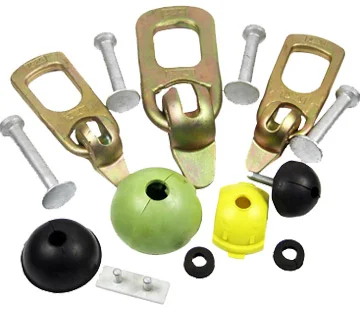
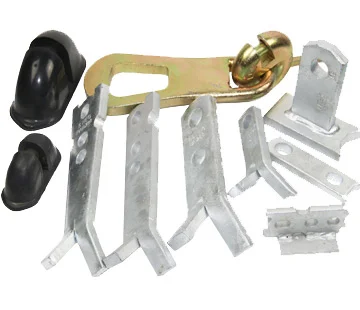

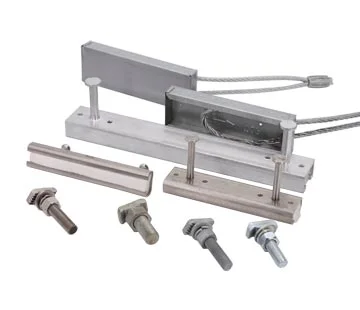

 Guardrail & Handrail Systems
Guardrail & Handrail Systems
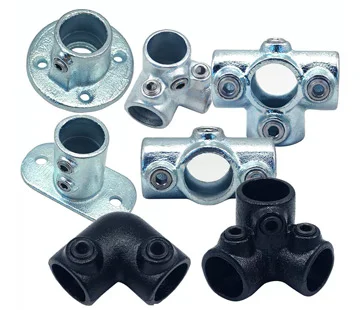

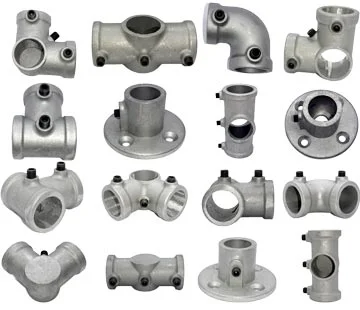
 Metal OEM Parts
Metal OEM Parts
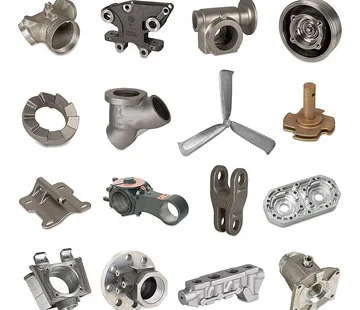
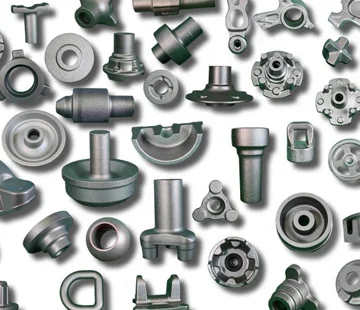
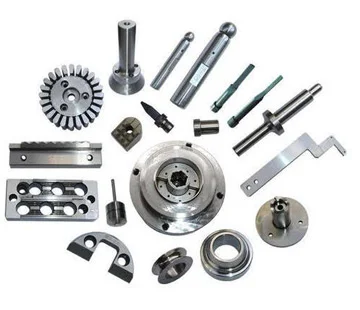
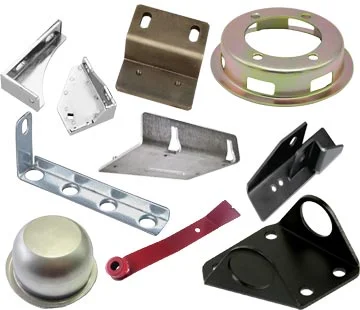
 Network Server Rack Accessories
Network Server Rack Accessories






 Wire Rope Cable Puller Griper
Wire Rope Cable Puller Griper
 Aluminum Parts
Aluminum Parts
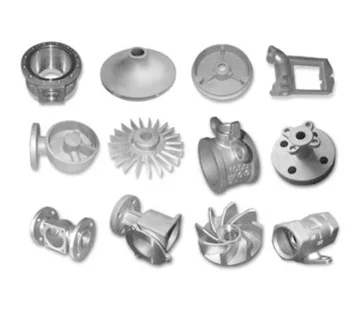
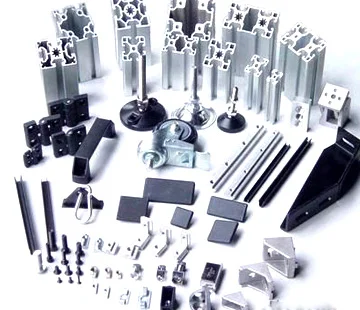
 Pump & Valve Parts
Pump & Valve Parts
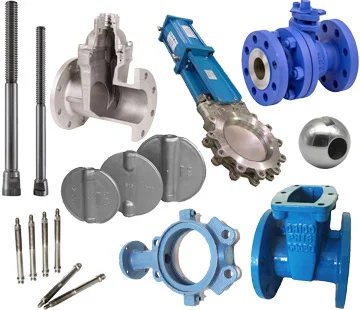
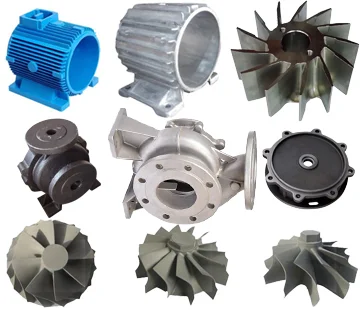









 Metal OEM Parts
Metal OEM Parts 



 Network Server Rack Accessories
Network Server Rack Accessories 





 Wire Rope Cable Puller Griper
Wire Rope Cable Puller Griper 








